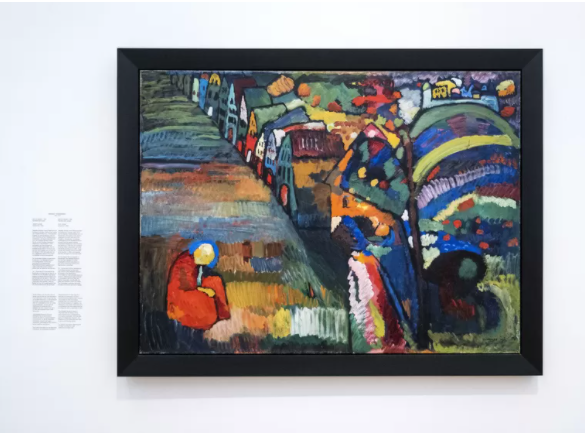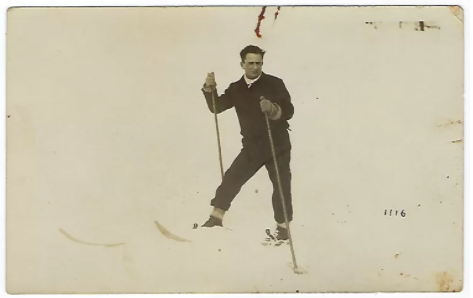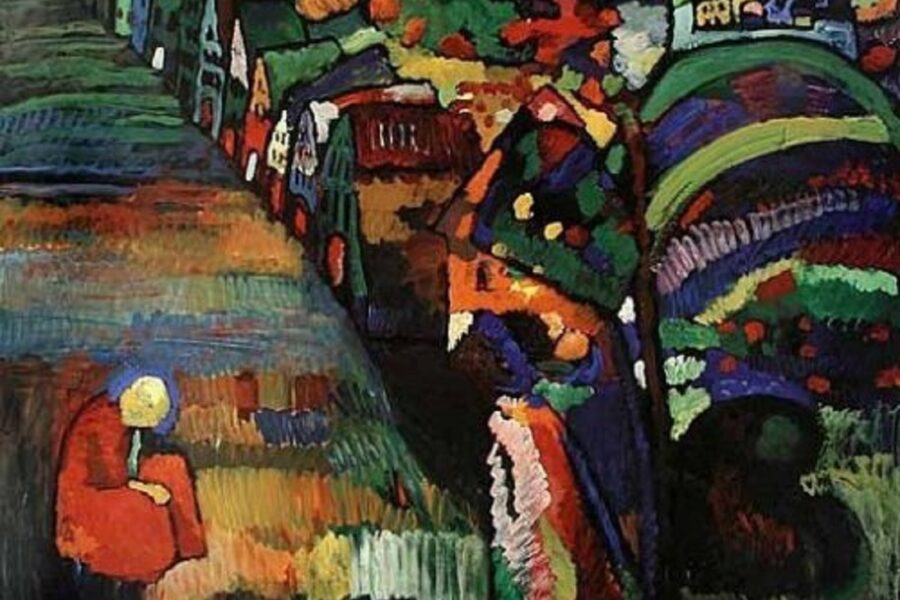[THIS IS AN ENGLISH TRANSLATION OF THE ORIGINAL DUTCH ARTICLE “Opinie: ‘Amsterdam, geef het geroofde schilderij Bild mit Häusern terug’ ” PUBLISHED ON HET PAROOL ON FEBRUARY 9, 2021]
It would be a good idea for the municipality of Amsterdam, owner of the work Bild mit Häusern, to return it to its heirs, writes Henk Jan Gortzak, former director of the Tropenmuseum, in this letter to the editor.
Henk Jan Gortzak February 9, 2021 , 2:00 PM

Bild mit Häusern IMAGE EPA
The municipality is in possession of an artwork Bild mit Häusern by Wassily Kandinsky that “may have a problematic provenance” (2013 Annual Report Stedelijk Museum). ‘Problematic’ is putting it mildly. It is part of looted art from the Nazi period.
The painting belonged to the art collection of E. Lewenstein before World War II. On October 9, 1940 it was auctioned off, the family was in serious trouble (they had bought the work in 1923 for 500 guilders), and the municipality bought it for 176 guilders. Since then it has been included in the collection of the Stedelijk Museum. The Stedelijk said several times that the work “does not belong to the highlights of the collection.
The heirs requested the return of the work in 2013. On December 16, 2013, the Ministry of Education, Culture and Science asked the so-called Restitutions Committee for advice on this matter.
In November 2018, the verdict comes: ‘It is not looted art, the heirs have no connection with the painting and the painting has an important place in the collection.’ In short, the municipality is not obliged to make restitution.
But not being obliged does not mean that the municipality cannot do so.
Since the Restitutions Committee was installed in 2001, there has been a great deal of criticism of its non-transparent working method. This criticism led to the House of Representatives’ decision in 2016 to evaluate it.
To this end, the Kohnstamm Committee was established in 2020. Last December, it issued its report. Jacob Kohnstamm: ‘Restitution is the only way to still recover something of the inhuman injustice’.
The report was scathing about the work of the Restitutions Committee. Its chairman resigned a week before the publication of the advisory report, without further explanation. Was this an admission of guilt or did he see the coming?
The vice-chairman, Ms E.H. Swaab, (contrary to the Culture Governance Code also former chairwoman of the Stedelijk Museum’s Business Club) succeeded him. She was previously partly responsible for the following text in the Restitutions Committee’s 2018 annual report: ‘The main criticism of its work is that it pays attention to the importance of the work of art for its current owner.’
This turns out to be precisely the sore spot on which the Kohnstamm Committee now also places its finger. The committee goes on to accuse negligence and a lack of empathy. After that it remained silent.
I expect nothing from the Stedelijk Museum. The current director, Mr Rein Wolfs, says without further ado that he ‘has nothing to add to the decision of the Restitutions Committee’ and ignores the conclusions of the Kohnstamm committee.
It would be good for the municipality of Amsterdam, owner of the work Bild mit Häusern, to return it to the heirs. That would also save a lot of time and money on further legal procedures. Next May 4 or 5, seems to me an ideal date.
Henk Jan Gortzak, former director of the Tropenmuseum

IMAGE PRIVATE ARCHIVE
The heirs of the Lewenstein family demand the return of a painting by Wassily Kandinsky in legal proceedings against the Stedelijk Museum and the municipality of Amsterdam.
The painting Bild mit Häusern from 1909 currently hangs in the Stedelijk Museum in Amsterdam
Correction: an initial version of this article incorrectly stated that Ms. E.H. Swaab was a member of the board of the Stedelijk Museum. That is incorrect: she has been president of the Business Club of the same museum, with some 50 companies as members.


